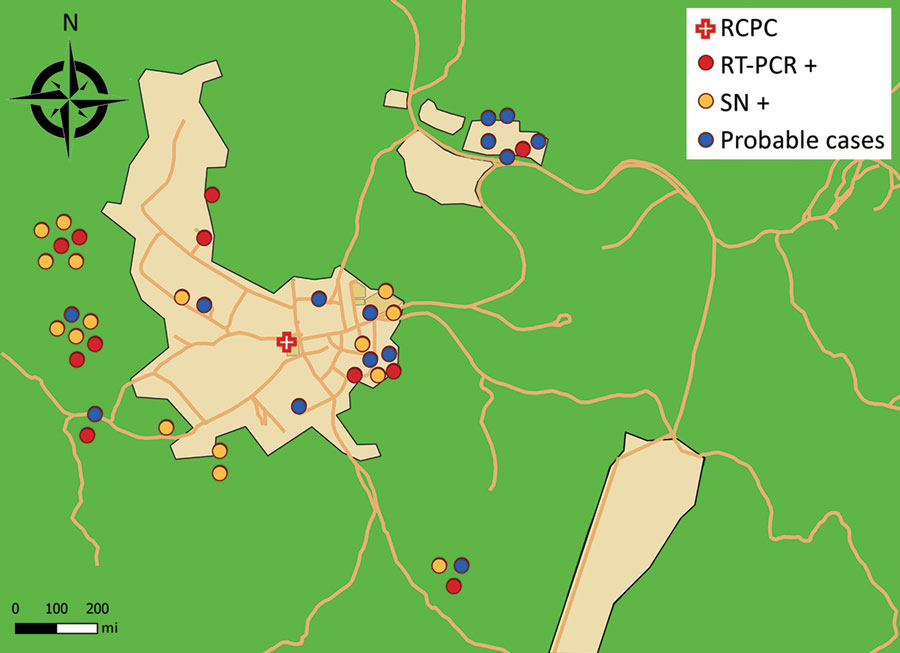Volume 27, Number 10—October 2021
Dispatch
Outbreak of Oropouche Virus in French Guiana
Figure 2

Figure 2. Spatial distribution of patient settlement around the town of Saül, French Guiana, and results of biologic testing for Oropouche virus by testing method. Geolocation is approximate to preserve patient anonymity. For probable cases (N = 18), samples were not taken. Green area, rainforest; light orange area, main districts of Saül; dark orange lines, forest trails. RCPC, remote centers for prevention and care; RT-PCR+, diagnosed with real-time PCR alone (N = 11); SN+, diagnosed with seroneutralization alone (N = 12).
1These authors contributed equally to the work.
Page created: July 30, 2021
Page updated: September 19, 2021
Page reviewed: September 19, 2021
The conclusions, findings, and opinions expressed by authors contributing to this journal do not necessarily reflect the official position of the U.S. Department of Health and Human Services, the Public Health Service, the Centers for Disease Control and Prevention, or the authors' affiliated institutions. Use of trade names is for identification only and does not imply endorsement by any of the groups named above.